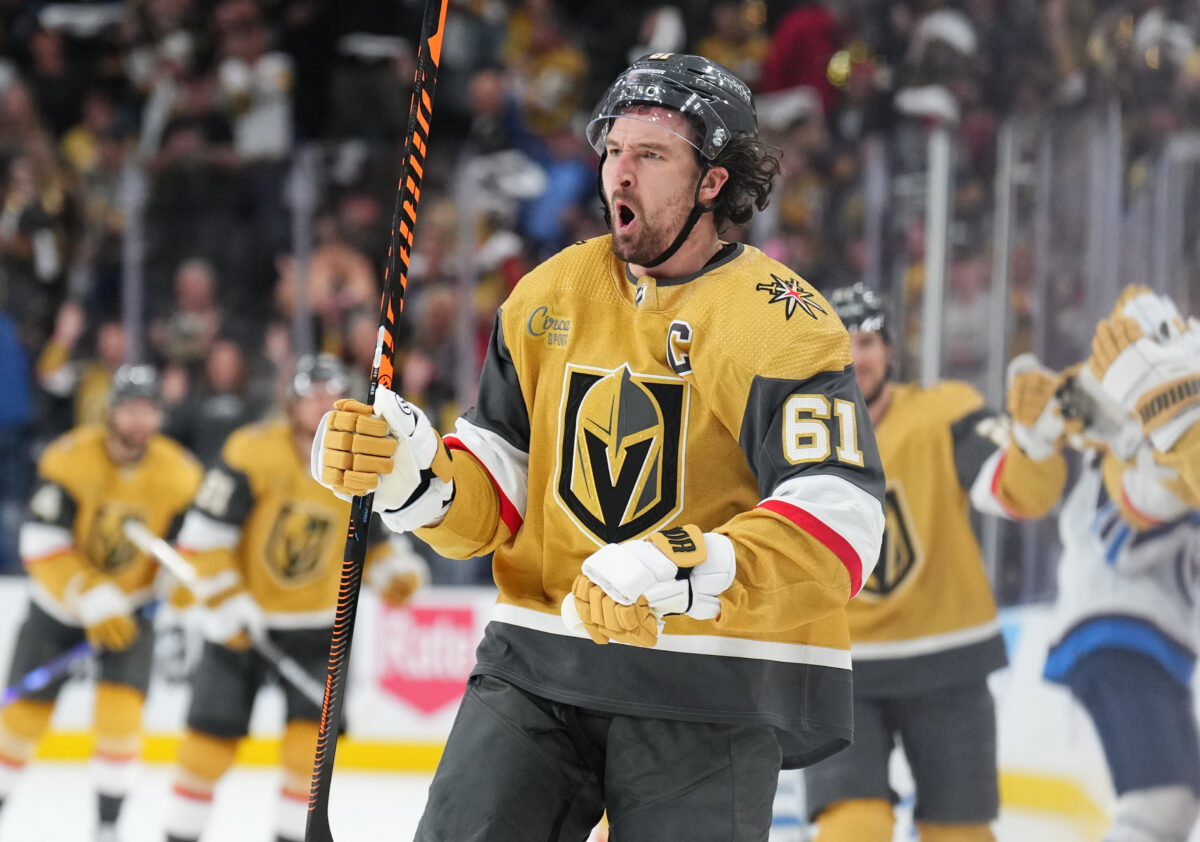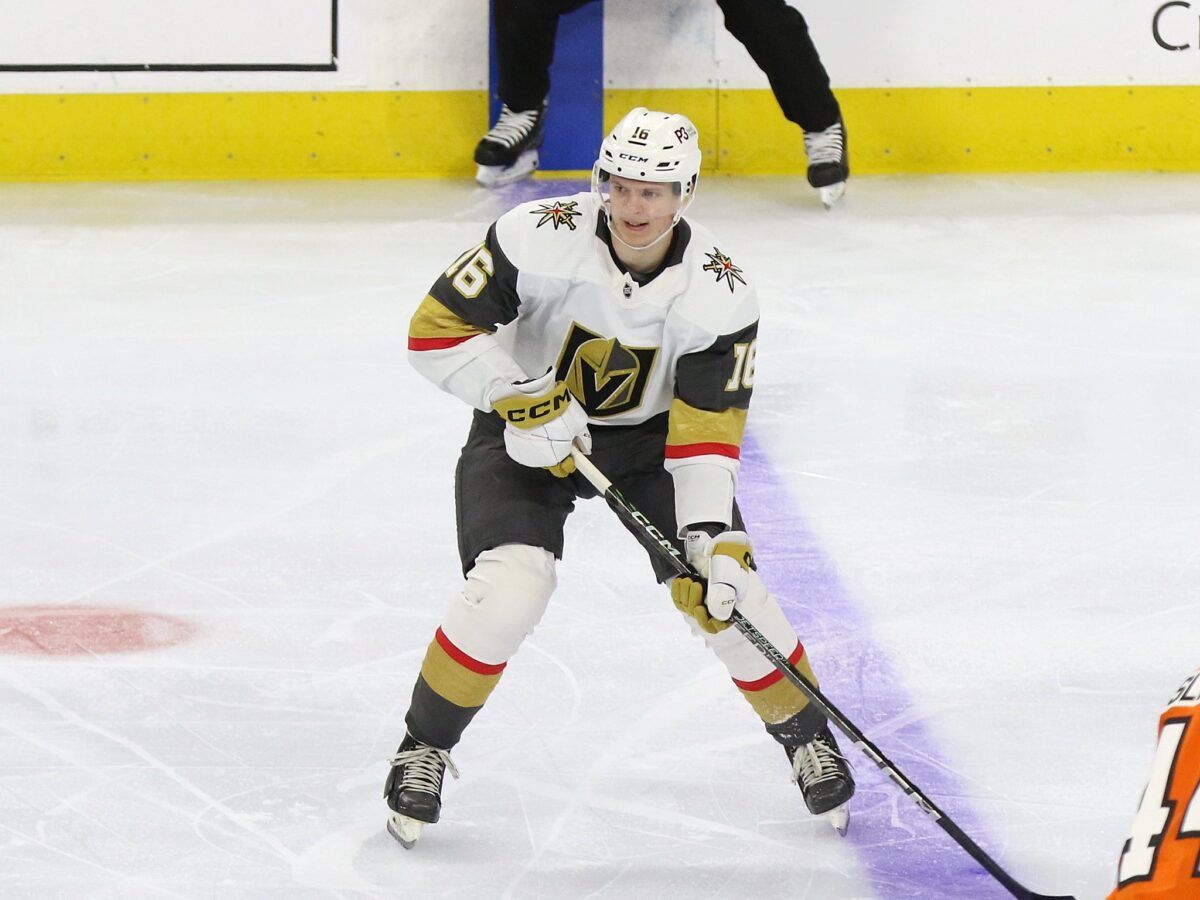With NHL training camps starting up in just a few weeks, fans will get a chance to see the Vegas Golden Knights step onto the ice as a team for the first time since hoisting the Stanley Cup in June. These skates will also give everyone an idea of what line combinations the Golden Knights will be putting together to start the 2023-24 regular season, including their power play groups.
The Golden Knights’ power play converted at 20.3 percent during the 2022-23 regular season, finishing 18th in the NHL in that category. Even during their Stanley Cup-winning run where their offensive output was uncharacteristically high, they still converted at a similar rate with the man-advantage (21.9 percent, 8th in playoffs).
There’s no question that the Golden Knights’ even-strength dominance was what set them apart from their competition in the playoffs, and it obviously provided enough scoring for them to win a Stanley Cup. However, the skill gap in the Pacific Division is closing and they’re going to need to be way more efficient on the power play in order to keep their offense at a competitive rate.
Let’s take some time to look at what issues the Golden Knights faced on the power play during the 2022-23 season, and what personnel and strategy changes they can make to improve for 2023-24.
Golden Knights’ Top Unit
Last season the top five players who led the Golden Knights in power play ice time were Chandler Stephenson, Alex Pietrangelo, Jack Eichel, Jonathan Marchessault and Reilly Smith. Considering that you want your best offensive players out on the ice while on the power play, it’s hard to believe that Mark Stone won’t fit on that list this season.
Related: Golden Knights Have 4 Good Options to Replace Reilly Smith
Stone was tied for the second most power play points on the Golden Knights during the 2023 Playoffs and if he can remain healthy for a full regular season with Reilly Smith gone, his presence alone will add a whole new threat to the Golden Knights’ power play. Stone is not only an elite passer, but a great shooter as well, making him a dynamic weapon that defenders can’t afford to leave open on the power play.

There were far too many indecisive power plays by the Golden Knights this past season, with there seemingly being no real game plan besides waiting for a scoring opportunity to present itself. Most players are given a role when deployed on the power play, and it felt like those roles weren’t clearly defined on this team. With most teams running a 1-3-1 strategy when it comes to how players are positioned, let’s break down where each Golden Knight fits best.
The first ‘1’ in the 1-3-1 is the player who walks the blue line and quarterbacks the power play, which is likely going to be Pietrangelo. I would like to see Shea Theodore take over as the more creative offensive-defenseman, as it felt like Pietrangelo played a one-dimensional game by electing to shoot the puck way more than create dangerous chances for his teammates, but it seems like it’s his job for now.
The ‘3’ in the 1-3-1 represents three players spread out on the left and right boards as well as in the middle of the zone, who are used to maintain puck possession and set teammates up for scoring chances, while also being in a shooting position themselves. With his right-handed shot, I believe Marchessault should be on the left boards where he can be a threat for one-timers, with Stephenson in the middle to retrieve pucks, and Eichel on the opposite side as the primary puck carrier.
Lastly, the final ‘1’ in the 1-3-1 represents the net front presence, who fights for loose pucks in front of the opposing goal and works on gaining favorable position over his defenders. The ideal player out of this group to handle this responsibility is Stone, who has incredible hand-eye coordination to tip pucks and the strength and poise to handle the pressure he would face in front of the net.
Golden Knights’ Secondary Unit
To my surprise, there is going to be a sizeable hole left on the secondary unit with the absence of Phil Kessel. He was eighth in power play ice time and was tied for sixth in power play scoring. While the secondary unit won’t be out there nearly as much, it’s important to have reliable offensive talent like Kessel who are getting reps in and could potentially fill in on the top unit in replacement for injured players.
The player that best resembles that description to me is Michael Amadio, who’s exceeded all expectations since joining the Golden Knights and has proven to be one of the most versatile offensive players in their lineup. He finished with a career-high 16 goals last season and spent time alongside some of the top Golden Knights forwards. He definitely deserves an increased role in the lineup this season and a permanent spot on the power play could be a perfect spot.
One of the potential wildcards that could be added to this unit is one of Paul Cotter or Pavel Dorofeyev, two of the youngest Golden Knights who have been able to show off their offensive talents in their short time at the NHL level last season. Despite the fact that Cotter played 37 more games than Dorofeyev (18) during the 2022-23 season, Dorofeyev finished with almost double the amount of power play ice time than Cotter did, making him the front runner for the role.

If we keep a similar structure of roles as we did with the top power play unit, I think the top candidate to be the next net-front presence would be Ivan Barbashev. He doesn’t shy away from driving the crease when he plays on the top forward line with Eichel and Marchessault, and can bring that style of play to the special teams unit. William Karlsson will almost certainly be a part of this secondary unit as well, likely as the main puck carrier on the right boards.
This leaves the quarterbacking position as the only vacant spot left on this unit, which will likely be whoever doesn’t make the top power play group between Pietrangelo and Theodore. However, if the Golden Knights deal with injuries throughout the season and need a replacement, they could add in someone experienced on the power play like Nicolas Roy if they wanted to try a five-man forward unit, which has been experimented with in the NHL in the past.
Final Thoughts
To recap, these are the lines that I came up with:
PP1: Shea Theodore, Jonathan Marchessault, Chandler Stephenson, Jack Eichel, Mark Stone
PP2: Alex Pietrangelo, William Karlsson, Michael Amadio, Pavel Dorofeyev, Ivan Barbashev
Despite still not having a true ‘power play specialist’, the Golden Knights will have to find ways to score by committee, like they do at even strength, in order to improve their special teams for the upcoming season. They won’t be like the Edmonton Oilers and they won’t need to be, but coming up with two strong units that are able to work well together is important to establish in the early stages of the regular season.
Regardless of this, there’s no question that the Golden Knights are a talented enough team to remain competitive as long as they’re able to replicate their even strength dominance. They’ve proven that they can play extremely disciplined and not have special teams dictate the outcome of their success, but it remains to be seen if that strategy can be replicated over multiple seasons.
